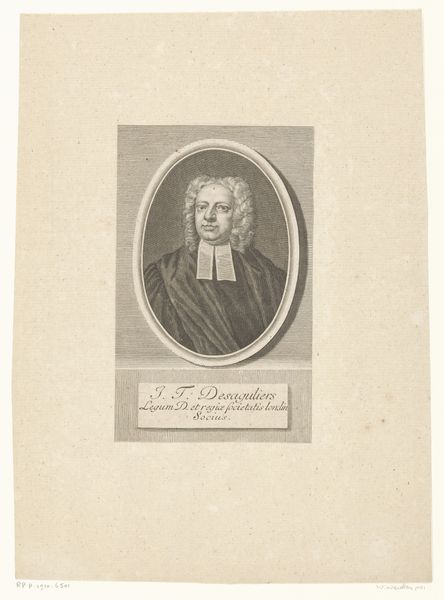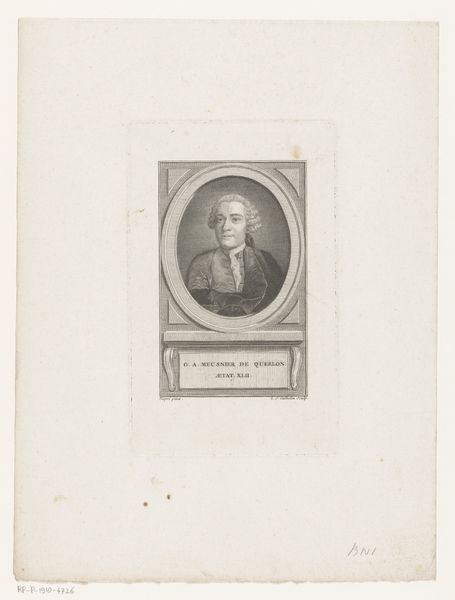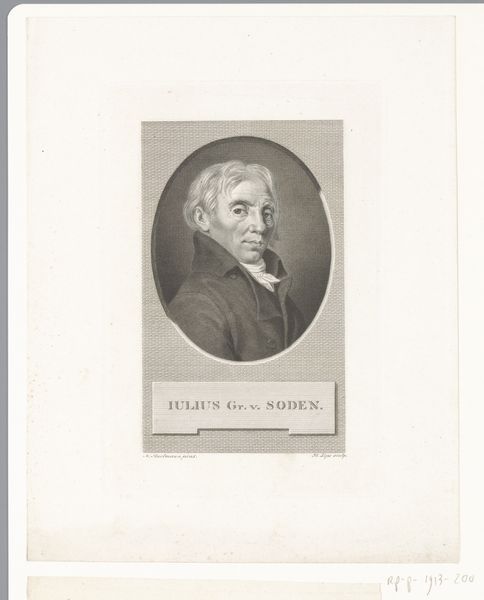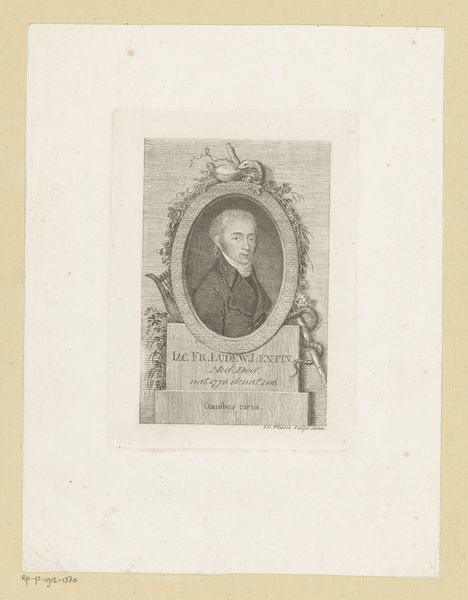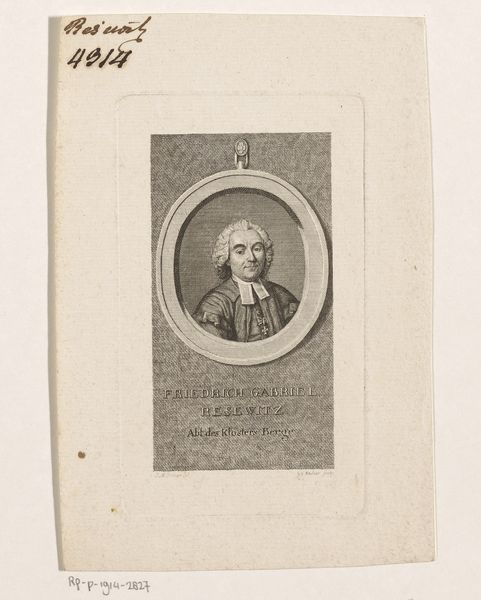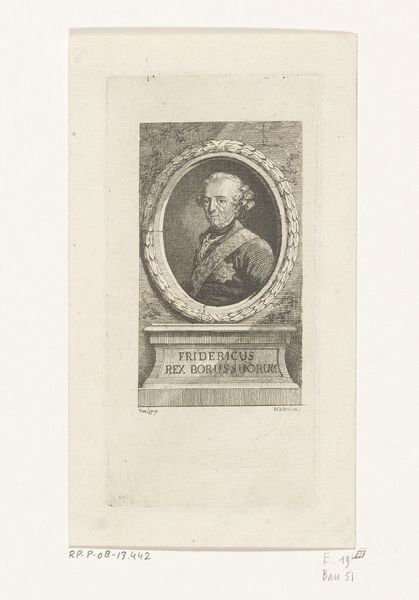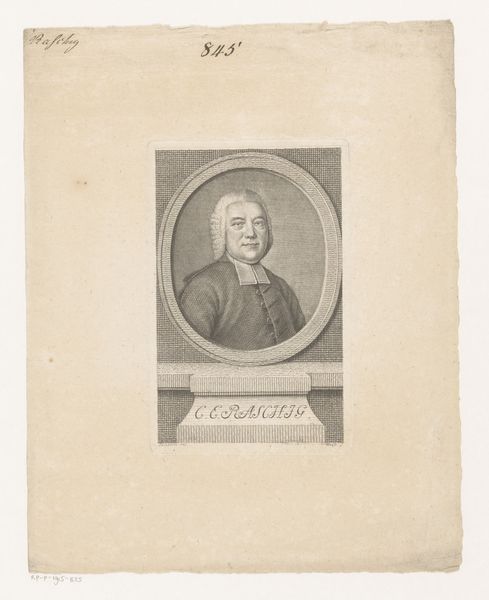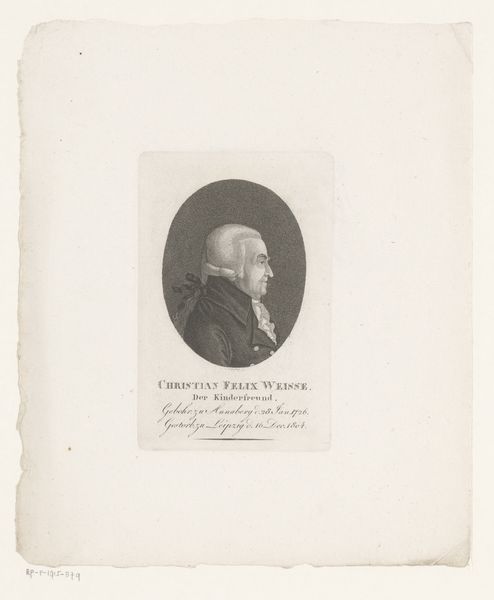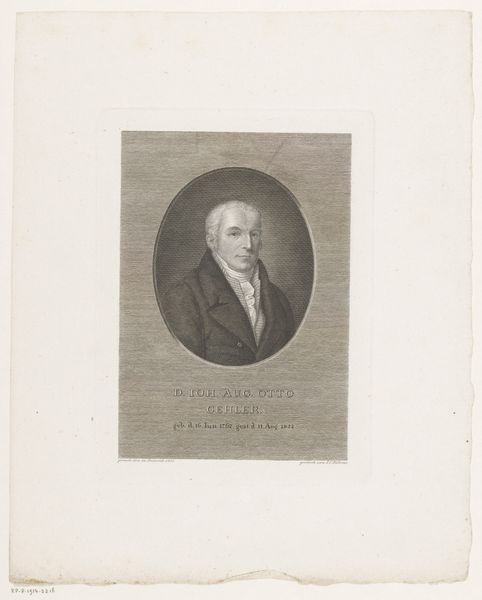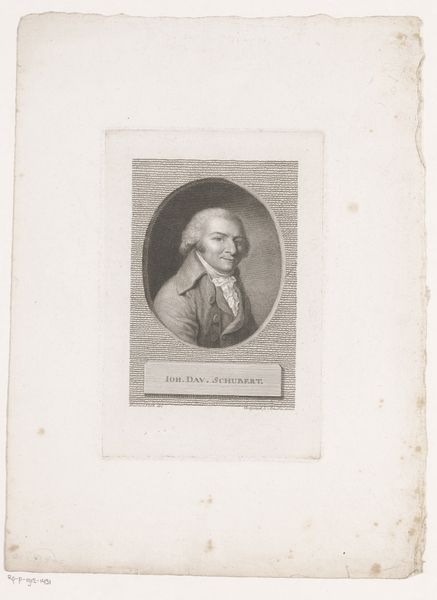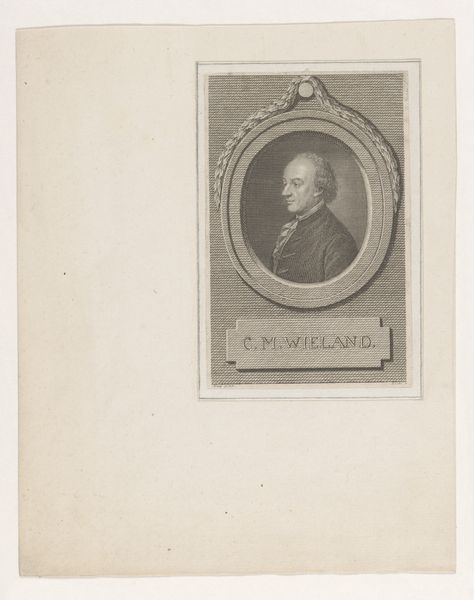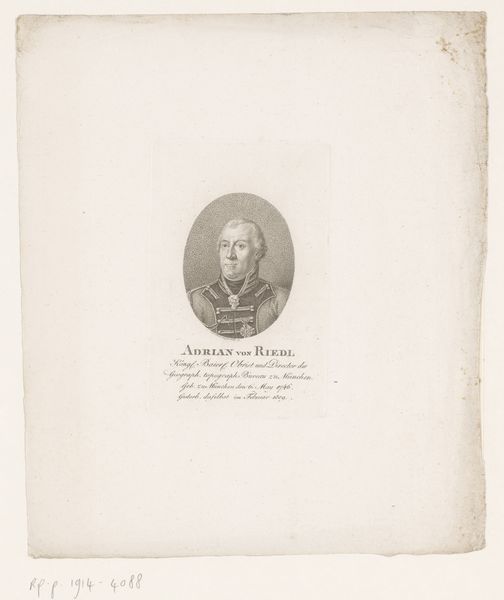
print, engraving
#
portrait
#
neoclacissism
# print
#
engraving
Dimensions: height 177 mm, width 115 mm
Copyright: Rijks Museum: Open Domain
Johann Heinrich Lips created this print of Christian Friedrich Karl Herzlieb at an unknown date using etching. It’s dedicated to Herzlieb’s surviving relatives and friends, according to the inscription below the portrait. Prints like these were a popular way to distribute likenesses of important public figures in eighteenth-century Europe. This one is interesting because it offers a glimpse into the world of German intellectual life at the time. Herzlieb, who died in 1794, seems to have been some kind of clergyman. Note the severe black coat and white tabs at the neck. The image creates meaning through visual codes. The oval frame around Herzlieb’s portrait, for example, lends him an air of classical dignity. The inscription, in elaborate German script, speaks to the cultural importance of remembering and honoring the dead. These details can tell us a lot about the social and institutional context in which this image was made. Researching the history of the church in late eighteenth-century Germany, for example, or the rise of print culture, would give us a richer understanding of its meaning.
Comments
No comments
Be the first to comment and join the conversation on the ultimate creative platform.
